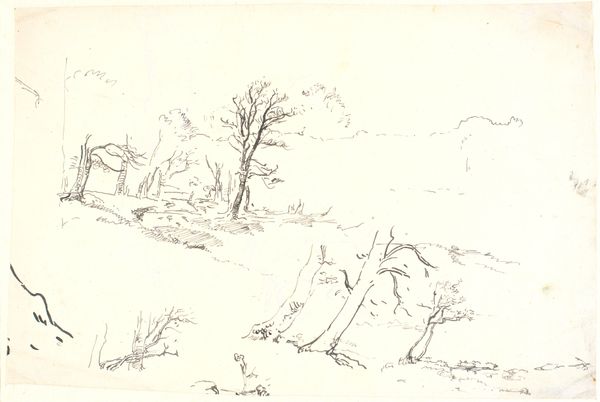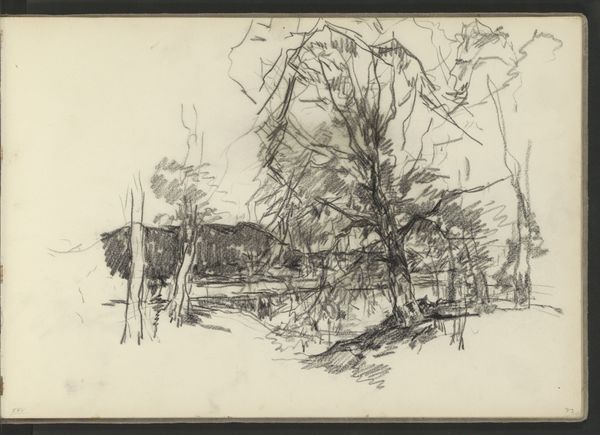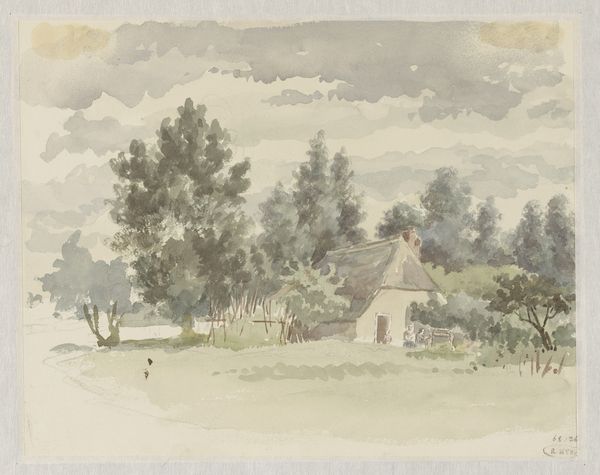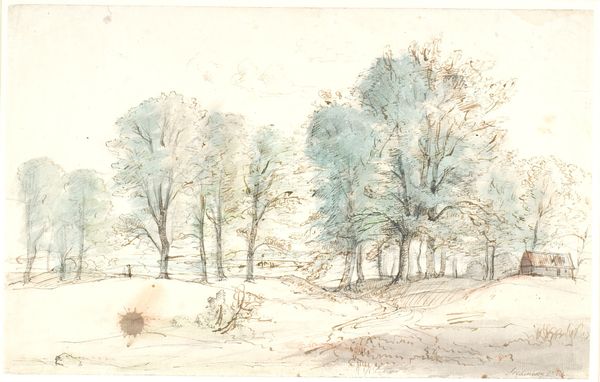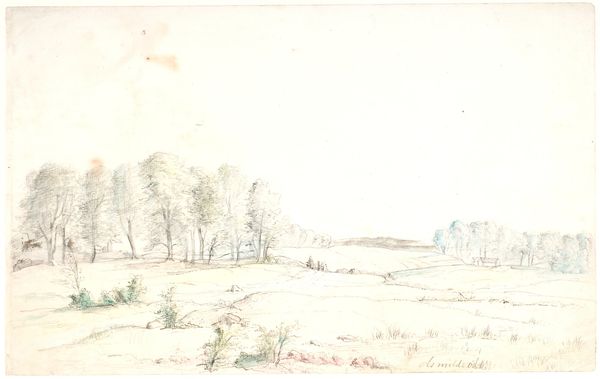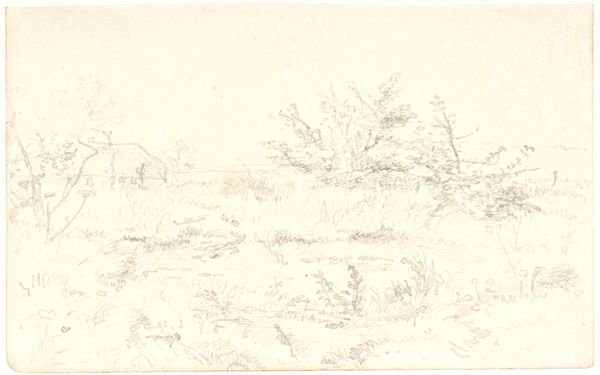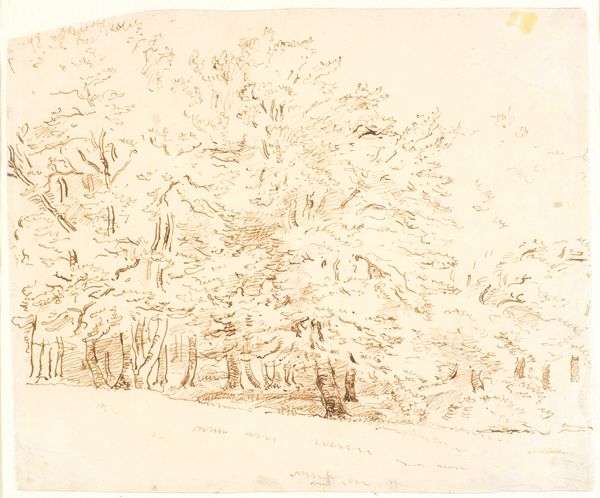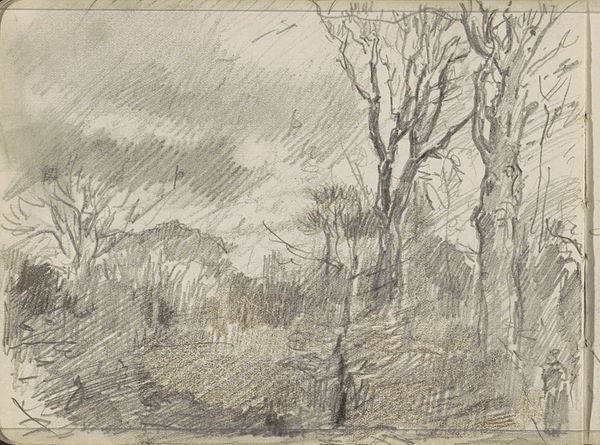
plein-air, watercolor
#
plein-air
#
landscape
#
etching
#
watercolor
#
watercolor
#
realism
Dimensions: height 178 mm, width 250 mm
Copyright: Rijks Museum: Open Domain
Curator: Lau Heidendael’s "Middelpolder," completed in 2009. The artist created this landscape en plein air using watercolors. Editor: It strikes me immediately as understated, even mournful. The palette is remarkably muted, dominated by shades of gray and washed-out greens. There is very little contrast, and the scene seems veiled, almost ethereal. Curator: Precisely. Note how Heidendael uses layering and varying dilutions of pigment to create depth. Observe also the almost scientific use of brushstrokes that build form, light, and atmospheric perspective without harsh lines, reflecting a turn towards post-impressionistic Realism. The composition draws the eye across the flat planes of the Polder landscape to the structures. Editor: Yes, but the structural qualities support this broader sense of the place, too. It’s hard not to see a comment here on landscape as both a subject and an object, the social constructions and impacts within land development reflected in our feelings towards land. The Dutch Polders represent one of humankind's largest and continued reclamations of lands. This manipulation and control that echoes throughout the delicate painting and technique. Curator: A keen insight into its historic impact. Now if we zoom in on the brushstrokes defining trees in this quiet rendering: how do we define the contrast in density versus delicacy, a very evident part of plein air methods here? Editor: In considering its audience, "Middelpolder," while initially underwhelming in scale, has an intensity, doesn’t it? I see an allegory, where the stark palette is used as metaphor for loss. It gives its viewers cause for concern. It makes one consider their hand in environmental affairs. Curator: Indeed, an appeal to environmental stewardship, yet I feel compelled by its structure, how the landscape informs our engagement of art’s structure. The light alone makes for complex study. Editor: Ultimately it’s an unnerving appeal isn't it? Art, history and concern. A statement piece that reflects the concerns and hopes of those that engage with landscapes to be shared by many to come.
Comments
No comments
Be the first to comment and join the conversation on the ultimate creative platform.




